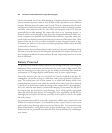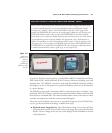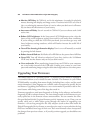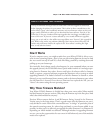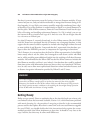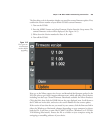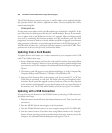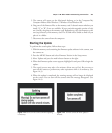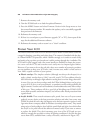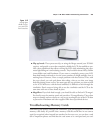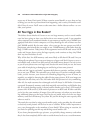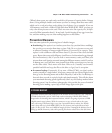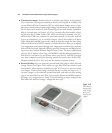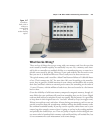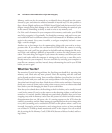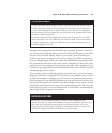
7. Remove the memory card.
8. Turn the D7000 back on to load the updated firmware.
9. Press the MENU button and select Firmware Version in the Setup menu to view
the current firmware number. If it matches the update, you’ve successfully upgraded
that portion of the firmware.
10. Reformat the memory card.
11. If there is a second part to your firmware upgrade (“A” or “B”), then repeat all the
steps for the additional firmware software.
12. Reformat the memory card to return it to a “clean” condition.
Protect Your LCD
The massive three-inch color LCD on the back of your Nikon D7000 almost seems like
a target for banging, scratching, and other abuse. The camera is furnished with the plas-
tic Nikon BM-8 LCD protector, which I dislike strongly, as it tends to scratch easily
and tends to fog up when you breathe on it while peering through the viewfinder. The
LCD itself is quite rugged, and a few errant knocks are unlikely to shatter the protec-
tive cover over the LCD, and scratches won’t easily mar its tempered glass surface.
However, if you want to be on the safe side, there are a number of protective products
you can purchase to keep your LCD safe—and, in some cases, make it a little easier to
view. Here’s a quick overview of your options.
■ Plastic overlays. The simplest solution (although not always the cheapest) is to
apply a plastic overlay sheet or “skin” cut to fit your LCD. These adhere either by
static electricity or through a light adhesive coating that’s even less clingy than stick-
it notes. You can cut down overlays made for PDAs (although these can be pricey
at up to $19.95 for a set of several sheets), or purchase overlays sold specifically for
digital cameras. Vendors such as Hoodman (www.hoodmanusa.com) offer overlays
of this type. These products will do a good job of shielding your D7000’s LCD
screen from scratches and minor impacts, but will not offer much protection from
a good whack.
■ Acrylic shields. These scratch-resistant acrylic panels, laser cut to fit your camera
perfectly, are my choice as the best protection solution, and what I use on my own
D7000. At about $6 each, they also happen to be the least expensive option as well.
I get mine from a company called ‘da Products (www.daproducts.com). They attach
using strips of sticky adhesive that hold the panel flush and tight, but which allow
the acrylic to be pried off and the adhesive removed easily if you want to remove
or replace the shield. They don’t attenuate your view of the LCD and are non-
reflective enough for use under a variety of lighting conditions. I also like the glass
covers from GGS, available from a variety of sources, and shown in Figure 14.5.
David Busch’s Nikon D7000 Guide to Digital SLR Photography468



